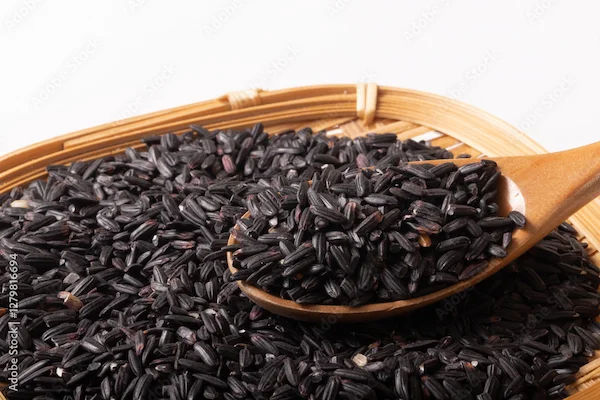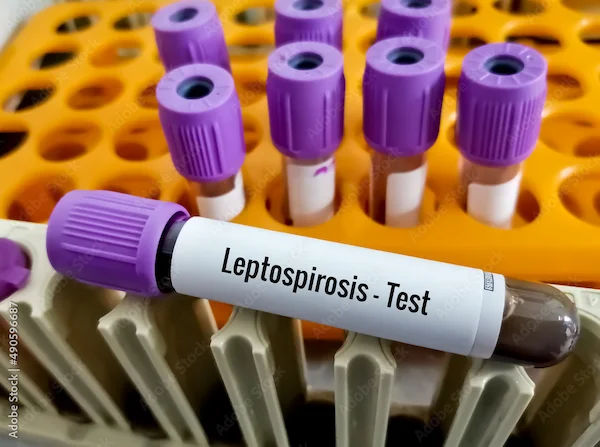Hemoptysis: Everything You Need To Know
Learn about hemoptysis, its causes, symptoms, diagnosis, and treatment options. Understand when coughing up blood is a serious concern and when to seek medical attention for proper evaluation and care.

Written by Dr.Sonia Bhatt
Last updated on 3rd Jul, 2025

Introduction
Hemoptysis, the medical term for coughing up blood or blood-streaked sputum, can be alarming. Whether it's a small amount of blood or a more significant amount, seeing blood in the mucus can cause anxiety and raise questions about what’s causing it. In most cases, hemoptysis may be caused by relatively mild conditions, but it can also be a symptom of more serious diseases.
If you or a loved one is experiencing hemoptysis, this guide will provide an in-depth look at what hemoptysis is, the potential causes, how it is diagnosed, treatment options available, and when it's important to seek medical help. With this information, you’ll gain a clearer understanding of the condition and how to manage it effectively.
What is Hemoptysis?
Hemoptysis is the medical term for coughing up blood or blood-streaked mucus from the respiratory tract, which includes the lungs, bronchi, trachea, or larynx. The blood is often mixed with mucus, which is typically produced in response to inflammation or infection in the airways. The amount of blood can vary, ranging from a small amount of blood-streaked sputum to larger volumes of blood.
It’s important to note that hemoptysis is different from vomiting blood, as the blood comes from the respiratory system rather than the gastrointestinal tract. Blood from hemoptysis is typically bright red and frothy, while blood vomited from the stomach tends to appear darker or look like coffee grounds.
Although hemoptysis can be alarming, not all cases are caused by serious conditions. Sometimes, it may be related to mild issues such as a respiratory infection or excessive coughing. However, it’s important to seek medical attention when experiencing hemoptysis, as it can also be a sign of more serious conditions, such as infections, lung cancer, or cardiovascular diseases.
Symptoms of Hemoptysis
Hemoptysis is typically characterized by the following symptoms:
Coughing Up Blood: The most common and obvious symptom is coughing up blood, which may range from a small amount of blood-streaked sputum to larger quantities of bright red blood.
Blood-Streaked Mucus: Often, the blood is mixed with mucus or phlegm. If the blood is only lightly streaked, it may be due to minor irritation or inflammation.
Shortness of Breath: Some individuals may experience difficulty breathing if the underlying condition is affecting lung function.
Chest Pain: In more severe cases, patients may experience sharp chest pain or discomfort when coughing, especially if there is a lung-related condition causing the bleeding.
Wheezing: Wheezing or a high-pitched whistling sound when breathing may occur, especially if there’s an airway obstruction or inflammation.
Fatigue or Weakness: If there’s significant blood loss or an underlying illness, you may feel unusually tired or weak.
While these are common symptoms, the severity and duration of hemoptysis can vary significantly.
Potential Causes of Hemoptysis
Hemoptysis is not a disease itself but a symptom of various potential conditions. The causes can range from minor, self-limiting conditions to more serious, chronic diseases. Some of the most common causes include:
1. Respiratory Infections
Bronchitis: Acute or chronic inflammation of the airways can lead to coughing and production of mucus. In some cases, the inflammation can cause small blood vessels in the airways to break, resulting in blood-streaked mucus.
Pneumonia: A lung infection can lead to tissue damage and inflammation, which may cause bleeding in the lungs.
Tuberculosis (TB): A bacterial infection of the lungs that causes long-lasting cough and often produces blood-tinged sputum. TB is less common but is a serious cause of hemoptysis, particularly in certain high-risk populations.
2. Chronic Lung Diseases
Chronic Obstructive Pulmonary Disease (COPD): This long-term lung disease, which includes conditions like emphysema and chronic bronchitis, can increase the risk of hemoptysis. The damage to lung tissue makes the blood vessels more fragile, leading to bleeding.
Cystic Fibrosis: A genetic disorder that leads to the production of thick, sticky mucus in the lungs, which can cause inflammation, infections, and bleeding.
3. Lung Cancer
Lung cancer is a serious and significant cause of hemoptysis. As tumors in the lungs grow, they can invade nearby blood vessels, causing bleeding into the airways. This bleeding is often more noticeable in the later stages of the disease and may indicate the cancer’s progression. People with a history of smoking or other risk factors for lung cancer should be especially aware of the signs. If you notice hemoptysis or have concerns about lung cancer, it's important to seek medical attention promptly.
4. Pulmonary Embolism (PE)
A pulmonary embolism occurs when a blood clot travels to the lungs, blocking a pulmonary artery. This can cause damage to lung tissue and lead to hemoptysis. Other symptoms of a PE include chest pain, difficulty breathing, and rapid heart rate.
5. Bronchiectasis
Bronchiectasis is a chronic lung condition where the airways become abnormally widened and scarred. This structural damage makes the airways more prone to frequent infections and inflammation. Over time, the persistent inflammation weakens the walls of the airways, causing them to become more fragile and prone to injury. As a result, blood vessels in the lungs are more likely to rupture, leading to bleeding. Consequently, individuals with bronchiectasis are at an elevated risk of experiencing hemoptysis.
6. Other Causes
Trauma: Injury to the chest or lungs, such as a rib fracture or car accident, can cause bleeding in the airways.
Foreign Body Aspiration: Inhalation of a foreign object (like food or small items) can injure the airways and result in bleeding.
Autoimmune Disorders: Conditions like vasculitis or Goodpasture syndrome can lead to bleeding in the lungs due to inflammation of blood vessels.
How is Hemoptysis Diagnosed?
If you experience hemoptysis, it is essential to consult with a healthcare provider, who will use several methods to determine the cause. The diagnostic process may include:
1. Medical History and Physical Exam
Your healthcare provider will begin by asking questions about your symptoms, medical history, and any recent illnesses or exposures (such as travel history, smoking history, or a history of lung disease). A physical exam may reveal signs of lung disease, infection, or other underlying conditions.
2. Imaging Tests
Chest X-ray: An X-ray can help identify lung infections, tumors, and other abnormalities in the lungs.
CT Scan: A CT scan provides more detailed images of the lungs and can help identify conditions such as tumors, pulmonary embolism, and bronchiectasis.
3. Laboratory Tests
Blood Tests: Blood tests may be used to check for signs of infection, clotting disorders, or other systemic conditions.
Sputum Culture: A sample of your sputum may be tested for infections like tuberculosis, bacterial pneumonia, or fungal infections.
4. Bronchoscopy
In some cases, a bronchoscopy may be performed. This procedure involves inserting a flexible tube with a camera through the airways to directly visualize the lungs and airways. It helps doctors find the source of bleeding and take samples for further testing if needed.
Treatment Options for Hemoptysis
The approach to managing hemoptysis depends on the underlying condition and the severity of the bleeding. Treatment options range from medications and procedures to supportive care and lifestyle changes. Here's a closer look at the various ways hemoptysis can be treated:
1. Medications:
Antibiotics: If an infection like bronchitis, pneumonia, or tuberculosis is causing hemoptysis, antibiotics may be prescribed.
Anticoagulants: If blood thinners are causing the bleeding, adjusting the dosage or switching medications might be necessary.
Bronchodilators: These can help open up airways and reduce coughing in conditions like asthma or COPD.
2. Procedures:
Bronchoscopy: A procedure where a doctor uses a bronchoscope to view the airways and identify the source of bleeding. It can also be used to stop the bleeding.
Cauterization: During bronchoscopy, bleeding vessels can be cauterized (burned) to stop the bleeding.
Laser Therapy: Lasers can be used to seal off bleeding vessels in the airways.
3. Surgery:
Lung Resection: In cases of severe or recurrent bleeding, part of the lung may need to be removed.
Pulmonary Embolism Treatment: If a blood clot in the lungs is causing hemoptysis, surgical intervention or clot-dissolving medications might be necessary.
4. Supportive Care:
Oxygen Therapy: To ensure adequate oxygen levels if breathing is compromised.
Humidified Air: Using a humidifier can help soothe irritated airways and reduce coughing.
5. Treating Underlying Conditions:
Managing Chronic Conditions: Conditions like COPD, bronchiectasis, or lung cancer need ongoing management to reduce the risk of hemoptysis.
Lifestyle Changes: Quitting smoking, avoiding lung irritants, and following a healthy lifestyle can help prevent further episodes.
Consult Top Pulmonologists To Know More
When to Seek Medical Help
If you experience hemoptysis, it is important to seek medical attention promptly, especially if:
You cough up a significant amount of blood.
You have other symptoms such as shortness of breath, chest pain, or fatigue.
You have a history of lung disease, smoking, or cancer.
The hemoptysis is persistent or recurrent.
Even if the bleeding seems minor, it’s better to err on the side of caution and consult with a healthcare provider to rule out serious conditions.
Conclusion
Hemoptysis, or coughing up blood, is a symptom that should never be ignored. It can arise from various underlying causes, ranging from infections and chronic lung diseases to more severe conditions like lung cancer or pulmonary embolism. Prompt medical evaluation is essential to determine the cause and initiate appropriate treatment. Treatment options can include medications, procedures, surgeries, and supportive care, all tailored to address the specific cause and severity of the bleeding. By understanding the potential causes and treatments for hemoptysis, individuals can be better prepared to seek timely medical attention and take proactive steps in managing their respiratory health. Remember, early intervention and proper management are key to addressing this potentially serious symptom effectively.
Consult Top Pulmonologists
Consult Top Pulmonologists To Know More

Dr Rakesh Bilagi
Pulmonology Respiratory Medicine Specialist
10 Years • MBBS MD PULMONOLOGIST
Bengaluru
Apollo Clinic, JP nagar, Bengaluru

Dr. P Sravani
Pulmonology Respiratory Medicine Specialist
3 Years • MBBS, MD
Visakhapatnam
Apollo Clinic Vizag, Visakhapatnam

Dr. E Prabhakar Sastry
General Physician/ Internal Medicine Specialist
40 Years • MD(Internal Medicine)
Manikonda Jagir
Apollo Clinic, Manikonda, Manikonda Jagir
(150+ Patients)

Dr. K Prasanna Kumar Reddy
Pulmonology Respiratory Medicine Specialist
16 Years • MBBS, DTCD (TB&CHEST), DNB (PULM MED), FCCP
Hyderabad
Apollo Medical Centre Kondapur, Hyderabad
Dr. Lokesh Kumar Garg
Pulmonology Respiratory Medicine Specialist
15 Years • MBBS,DTCD,PGDS
Faridabad
Arsh Hospital, Faridabad
Consult Top Pulmonologists

Dr Rakesh Bilagi
Pulmonology Respiratory Medicine Specialist
10 Years • MBBS MD PULMONOLOGIST
Bengaluru
Apollo Clinic, JP nagar, Bengaluru

Dr. P Sravani
Pulmonology Respiratory Medicine Specialist
3 Years • MBBS, MD
Visakhapatnam
Apollo Clinic Vizag, Visakhapatnam

Dr. E Prabhakar Sastry
General Physician/ Internal Medicine Specialist
40 Years • MD(Internal Medicine)
Manikonda Jagir
Apollo Clinic, Manikonda, Manikonda Jagir
(150+ Patients)

Dr. K Prasanna Kumar Reddy
Pulmonology Respiratory Medicine Specialist
16 Years • MBBS, DTCD (TB&CHEST), DNB (PULM MED), FCCP
Hyderabad
Apollo Medical Centre Kondapur, Hyderabad
Dr. Lokesh Kumar Garg
Pulmonology Respiratory Medicine Specialist
15 Years • MBBS,DTCD,PGDS
Faridabad
Arsh Hospital, Faridabad




